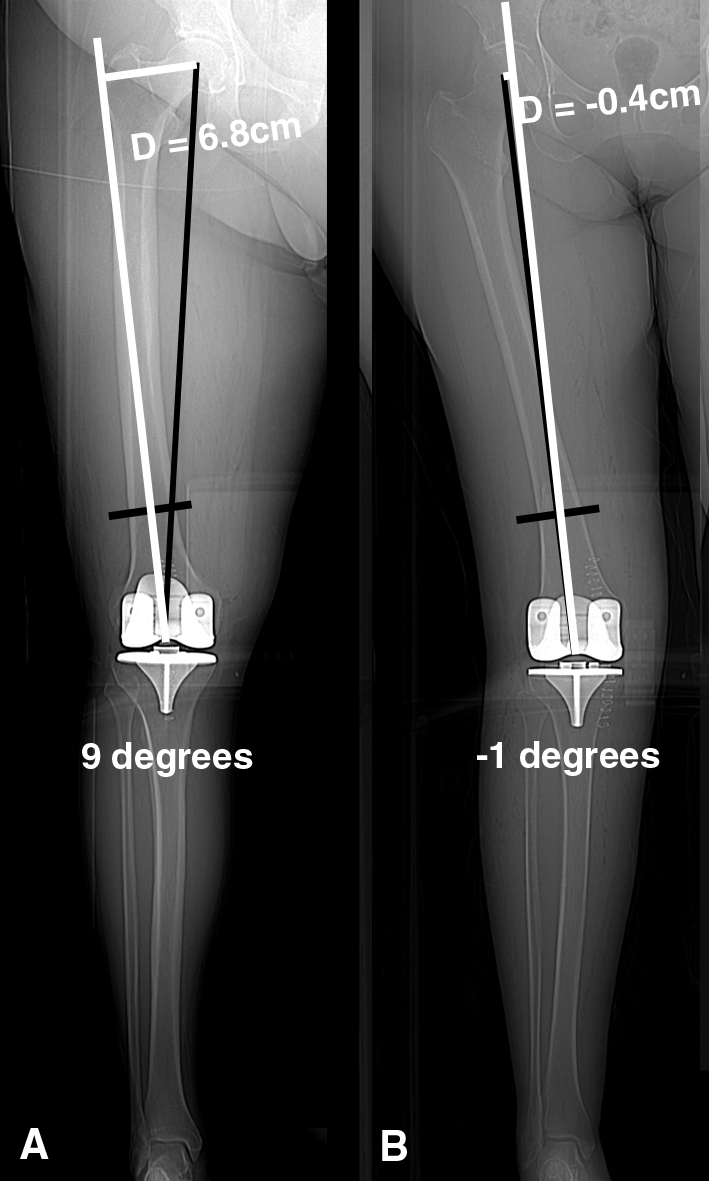Fig. 2A–B.

The anatomic axis of the femur (longitudinal white line) was a line joining the midpoints of the tibia at the joint line and at the junction of the distal one-fourth and proximal three-fourths of the femur (transverse black line). The mechanical axis of the femur was a line joining the midpoint of the femur at the joint line and the center of the femoral head (longitudinal black line). The angle formed by these two lines was measured. The bow of the femur was quantified by the offset (D) measured from a line (transverse white line) drawn perpendicular from the anatomic axis of the femur to the center of the femoral head. The larger the offset, the larger the bow with a positive value (+) indicating the anatomic axis passed lateral to the center of the femoral head and a negative value (−) indicating the anatomic axis passed medial to the center of the femoral head. (A) The offset of the femur with the greatest lateral bow was 6.4 cm. (B) The offset of the femur with the least lateral bow was −0.4 cm. Because of the variability in the lateral bow of the femur, the mechanical axis of the femur does not form a 5° to 6° angle with the anatomic axis of the distal fourth of the femur in either leg.
